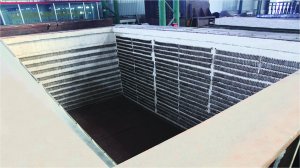Main Product
Contact
Concept, characteristics and mechanical properties of A537 Class 2
A537 Class 2 concept
The A537 Class 2 is a heat-treated carbon-manganese-silicon steel plate for pressure vessels and belongs to the SA537 series of ASME (American Society of Mechanical Engineers) standards. The series of steel plates is divided into three grades, namely A537CL1 (or SA537CL1), A537CL2 (or SA537CL2) and A537CL3 (or SA537CL3), of which A537 Class 2 (or SA537CL2) is one of the grades. After quenching and tempering heat treatment process, this steel plate has excellent mechanical properties and corrosion resistance.A537 Class 2 features
High strength: A537 Class 2 steel plate has high yield strength and tensile strength, and can withstand large loads.
Good toughness: the steel plate can still maintain high strength and toughness under low temperature or impact load conditions to prevent brittle fracture.
Excellent corrosion resistance: After heat treatment, the A537 Class 2 steel plate has excellent corrosion resistance and can be used in harsh environments for a long time.
Mechanical properties of A537 Class 2
The mechanical properties of A537 Class 2 steel plate are the key indicators of its ability to withstand various stresses and loads in practical applications, including yield strength, tensile strength, elongation and impact toughness.
Yield strength: The yield strength of A537 Class 2 steel plate is usually greater than or equal to 415MPa,
Tensile strength: The range of tensile strength of A537 Class 2 steel plate varies slightly in different data, but it is generally believed to be between 550MPa and 690MPa (or between 79725psi and 99750psi).
Elongation: The elongation of A537 Class 2 steel plate is usually greater than or equal to 22%. This means that during the tensile process, the material can undergo large plastic deformation without fracture, thus ensuring the safety and stability of the structure.
Impact toughness: A537 Class 2 steel plate usually also has good impact toughness, can maintain high strength and toughness under low temperature or impact load conditions, to prevent brittle fracture.

 Address:Zhengzhou city in China.
Address:Zhengzhou city in China. Phone:0086-371-86151827
Phone:0086-371-86151827 Email:
Email:



 Address: Zhengzhou city in China.
Address: Zhengzhou city in China.


